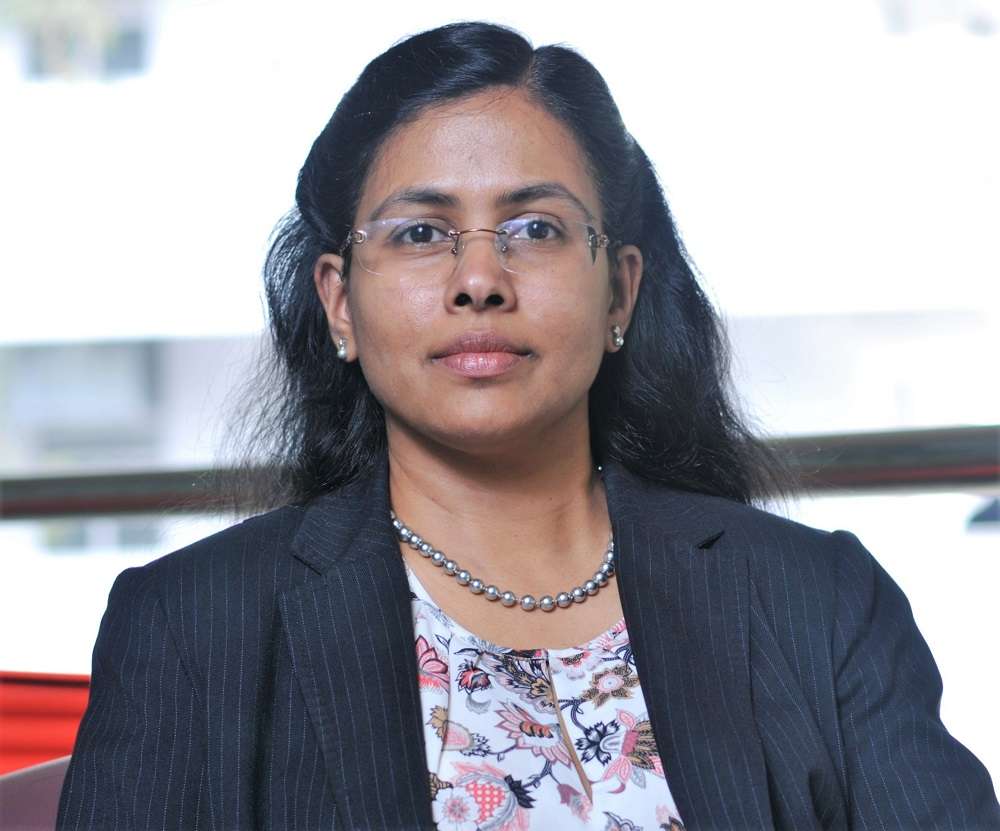
To understand the ground reality of the topic, ETCIO spoke to industry leaders about their journey of entering C-suite leadership in the technology domain and what they continue to think about the gender disparity cause in their respective industries.
Breaking the glass ceiling: What it means to be a woman in the technology sector
Shaveta Wadhera, Chief Digital Officer at Hero Cycles is one of the leading women technologists in the manufacturing sector. She is a role model for women entrepreneurs, techies, and innovators.
She believes that as a woman leader one went through the different stages of life from being a daughter, a wife, a mother to quintessential homemaker responsibilities and striking the balance in all those roles to the ambition of making one’s mark in the corporate world, has its own set of excitement and challenges through the journey.
“Each stage had different shades of learning and challenges, but the mantra was to stay focussed on the mandate at hand to the best of one’s ability. Perseverance and consistency are important. It is important to understand that businesses do not differentiate between who is delivering the outcomes, the performance metrics are the same for everyone. While yes there are always people trying to judge you as a women leader, the best way to respond is for your performance to speak for itself,” She added.
Similarly, Radhika Saigal, Partner-Technology at EY feels that there is a lack of women technology leaders in the country. She understands that there is a gender gap that is yet to be eliminated completely in the country. Saigal has led banks and enterprises in her career and today she is herself focused on developing new opportunities for other women entering tech.
“Being at the top involves a lot of hard work and perseverance of individual and family support – irrespective of gender. It is even tough when there are glass ceilings created for women due to societal pressures. If we want gender stereotypes to be broken for our sons and daughters, we need to stand up and be role models for them. Besides hard and intelligent work, we have to create our own support system and seek support to create a meaningful work-life balance,” Saigal expressed.
Diversity and inclusion are necessary in the workplace, society, and the world, especially when it comes to the ever-transient world of technology.
According to Sheenam Ohrie, VP, Dell Digital, and APJ CIO Leader, Dell Technologies, women have taken tremendous strides over the years to achieve equal representation at the workplace, even in fields that have been historically male-dominated. While much progress has been made, there’s still a long way to go to achieve gender parity in the technology sector. Today, women hold between 17-30% of tech-focused roles at eight of the world’s largest tech companies.
Achievements that altered the course of personal and professional life
When Ohrie started her career, there was no concept of diversity. Back in 1992, there were hardly any women in engineering and tech colleges to later join the workforce. Diversity became the buzzword in organizations around 2009-10. Companies wanted to open vacancies especially for women and give them promotions but because all this was so sudden, women would often shy away from such opportunities.
“Today, bringing women into the workforce is not a concern; retaining them is. We are no longer asking “why women” or “why diversity”. We are channeling our energies and resources into training and flourishing women employees, into increasing the number of women in executive positions and C-suites. The conversation is entirely different now,” Ohrie emphasised.
She still continues to challenge herself by seeking new opportunities, through role rotations and never getting comfortable in one role. She feels that we all need to be self-aware of our strengths and opportunities to continuously improve.
Likewise, Wadhera trusted her inner voice and held the conviction which helped her in taking the right path and decisions in life.
Shaveta being one of the few women working in core tech solutions for the manufacturing sector feels that self-belief has been the core foundation of every achievement she has received in her life.
Lack of women in C-suite positions in tech
The lack of women in C-suite positions in tech is an issue that needs to be addressed at a conscious level and through collaborative efforts between men and women.
“As organizations adopt new hybrid models of work, with work not being location and travel-constrained, with increased flexibility around managing work and personal life, the hope is that more women can be brought into the formal workforce. And this improved ability to maintain continuous careers will also propel more women into leadership roles. However, while India has more girls in STEM education, higher than the US and the EU, but women only make up about 30% of the IT sector workforce,” Daisy Chittilapilly, MD-Digital Transformation Office, Cisco India, and SAARC said.
She also highlighted her thoughts on pay parity for women.
Adding to the note, she says that “Another encouraging conversation in recent times is the one around ensuring pay parity for women, who for long have been paid lesser than their male counterparts for the same work. This pay gap is currently between 20-30% in tech, depending on the country, company. The acknowledgement by equal opportunity employers of this pay gap, and the efforts to bridge it, will go a long way in ensuring the sustainability of women’s participation in the tech workforce. And in the process, hand the companies that create these inclusive environments their much-needed competitive edge.”
Gender disparity and other key challenges faced by women in tech
Gender equality is not just a social cause it is as much an economical cause. It is proven that organizations that have a higher balance of gender at the senior level do on an average 33% more in revenue as well as margins as compared to organisations that have skewed gender ratios at leadership.
“The only way to combat this inequality is to consciously tackle gender parity. Hence many organizations are reviewing and consciously bridging the pay parity and retention,” Saigal emphasised.
On the contrary, there’s a transition happening at the corporates and society level, where mindsets are getting turned into eliminating the gender gap wherever possible.
Resonating the same thought, Wadhera emphasised that “As a society, we are now opening up to accepting the presence of women in the leadership roles or the boardroom, which frankly wasn’t such a welcome trait till a decade back. It’s unfortunate but a reality that in the Indian context women are judged on their ability to deliver business outcomes and have to prove themselves every time to be eligible for that role, which is not the norm for the opposite gender. At the same time, the additional household responsibilities yet meeting the ever-growing demands of the corporate sector drive significant time pressure and stress. The fallout is that even the most brilliant of women get burnt out trying to strike that balance and exit the corporate world in their mid-career.”







